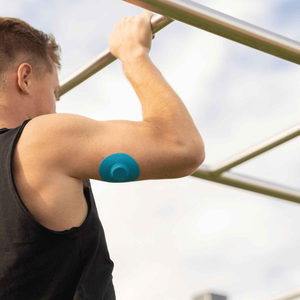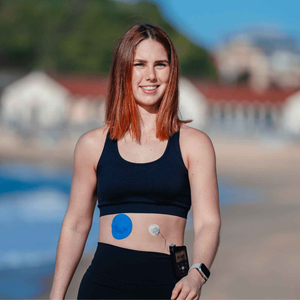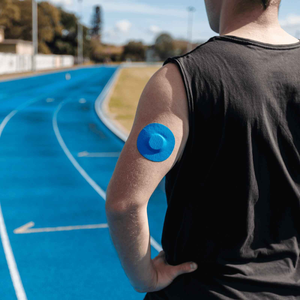The Impact of Exercise on Diabetes Management: Empowering Health with Type Strong
Regular physical activity is a key aspect of diabetes management, offering a multitude of benefits for individuals living with this chronic condition. From improving blood sugar control to enhancing overall health and well-being, exercise plays a crucial role in empowering individuals to take control of their diabetes and live life to the fullest. At Type Strong, we're committed to supporting individuals on their journey to better health, which is why we're exploring the profound impact of exercise on diabetes management in this comprehensive guide.
Understanding Diabetes and Exercise: The Basics
Before delving into the specifics of how exercise affects diabetes management, it's essential to understand the basics of diabetes. Diabetes is a metabolic disorder characterised by elevated blood sugar levels resulting from either insulin resistance or insufficient insulin production. There are several types of diabetes, including Type 1 diabetes, Type 2 diabetes, and gestational diabetes, each with its unique challenges and considerations regarding exercise.
Exercise has a profound effect on blood sugar levels, as it increases the body's demand for glucose as fuel. During physical activity, muscles use glucose for energy, leading to a decrease in blood sugar levels. Additionally, exercise improves insulin sensitivity, allowing cells to more effectively absorb glucose from the bloodstream, which helps lower blood sugar levels further.
Benefits of Exercise for Diabetes Management
Regular exercise offers numerous benefits for individuals with diabetes, including:
1. Improved Blood Sugar Control: Exercise helps lower blood sugar levels by increasing insulin sensitivity and promoting glucose uptake by muscles. Regular physical activity can lead to more stable blood sugar levels and reduce the risk of hyperglycaemia (high blood sugar) and hypoglycaemia (low blood sugar).
2. Weight Management: Exercise plays a crucial role in weight management, helping individuals achieve and maintain a healthy weight. Excess body weight, particularly around the abdomen, is a significant risk factor for type 2 diabetes. Regular physical activity can aid in weight loss or weight maintenance, reducing the risk of developing type 2 diabetes and its complications.
3. Cardiovascular Health: Diabetes increases the risk of cardiovascular diseases such as heart disease and stroke. Exercise helps improve cardiovascular health by lowering blood pressure, reducing LDL cholesterol (bad cholesterol), and increasing HDL cholesterol (good cholesterol). Regular physical activity can reduce the risk of heart disease and improve overall cardiovascular function.
4. Stress Reduction: Living with diabetes can be stressful, as individuals must manage various aspects of their condition daily. Exercise is a powerful stress reliever, helping to reduce anxiety, improve mood, and promote relaxation. Engaging in physical activity can enhance overall well-being and quality of life for individuals with diabetes.
5. Enhanced Fitness and Energy Levels: Regular exercise improves fitness levels, endurance, and energy levels, making daily activities easier to manage. Individuals with diabetes who exercise regularly may experience increased stamina, improved mobility, and a greater sense of vitality.
Tips for Incorporating Exercise into Diabetes Management
Integrating exercise into a diabetes management plan requires careful consideration and planning. Here are some tips to help individuals with diabetes incorporate exercise safely and effectively:
1. Consult with Healthcare Provider: Before starting an exercise program, individuals with diabetes should consult with their healthcare provider to ensure it is safe and appropriate for their specific health needs. Healthcare providers can offer guidance on exercise intensity, duration, and potential adjustments to diabetes medication or insulin doses.
2. Choose Enjoyable Activities: Selecting activities that are enjoyable and sustainable is key to maintaining a regular exercise routine. Whether it's walking, swimming, cycling, or dancing, choose activities that you enjoy and look forward to doing regularly.
3. Gradually Increase Activity Levels: Start with short sessions of physical activity and gradually increase the duration and intensity over time. Aim for at least 150 minutes of moderate-intensity aerobic exercise per week, spread throughout the week, along with muscle-strengthening activities on two or more days per week.
4. Monitor Blood Sugar Levels: Check blood sugar levels before, during, and after exercise to monitor how physical activity affects glucose levels. Carry fast-acting carbohydrates such as glucose tablets or juice to treat hypoglycaemia if necessary, and be prepared to adjust diabetes management strategies based on blood sugar responses to exercise.
5. Stay Hydrated and Fuelled: Drink plenty of water before, during, and after exercise to stay hydrated, especially in hot or humid conditions. Eat a balanced meal or snack containing carbohydrates and protein before exercising to provide fuel for the workout and prevent hypoglycaemia.
6. Listen to Your Body: Pay attention to how your body responds to exercise and adjust your routine as needed. If you experience dizziness, weakness, or other symptoms of low blood sugar, stop exercising and treat hypoglycaemia promptly.
Empowering Health Through Exercise with Type Strong
Exercise is a powerful tool for managing diabetes and promoting overall health and well-being. By incorporating regular physical activity into a diabetes management plan, individuals can improve blood sugar control, manage weight, reduce the risk of cardiovascular complications, and enhance their quality of life. At Type Strong, we're committed to empowering individuals with diabetes to live their best lives through innovative solutions and support. Whether it's our adhesive patches for continuous glucose monitors or educational resources like this blog, we're here to help you harness the benefits of exercise and take control of your health.





